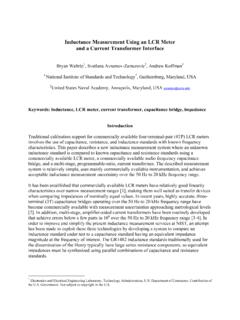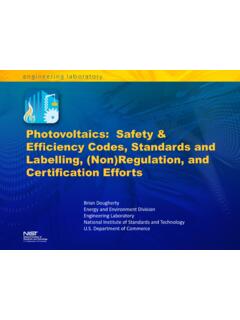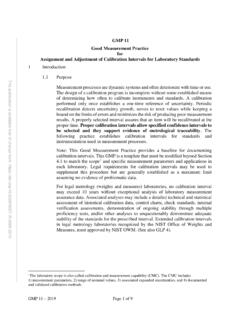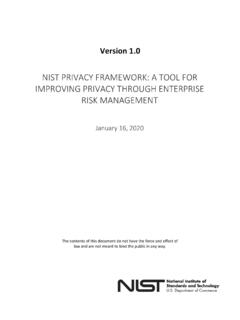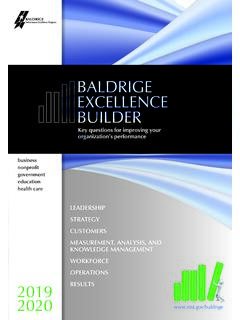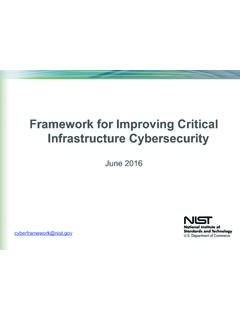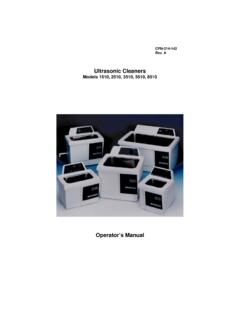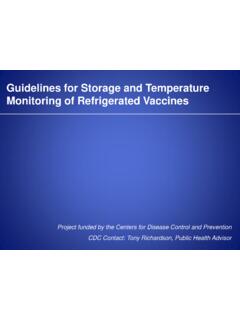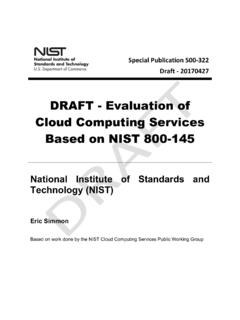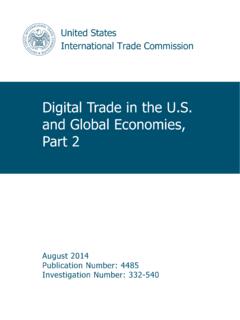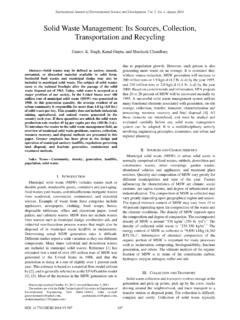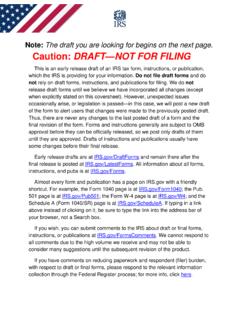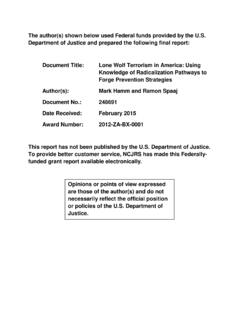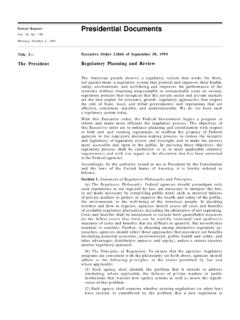Transcription of Standard Guide for Collection of Soils and Other ...
1 This document has been sent to ASTM International for development a s an ASTM Standard . For information about ASTM and their process please refer to This document i s being made available at t his stage of the process so that t he forensic science community an d interested stakeholders can be more fully aware of the efforts and work products of the Organization of Scientific Area Committees for Forensic Science (OSAC). The documents were prepared with input from OSAC Legal Resource Committee, Quality Infrastructure Committee, and Human Factors Committees, as wel l a s t he relevant Scientific Area Committee. The content of the documents listed below is subject t o change during the standards development process within ASTM and may not represent the contents of the final published Standard . All s takeholder groups or individuals are strongly encouraged to submit technical comments on this draft document during the ASTM balloting process.
2 Technical c omments wil l not be accepted if submitted to the OSAC Scientific Area Committee or Subcommittees. Standard Guide for Collection of Soils andOther Geological Evidence for Criminal Forensic ApplicationsDraft Document 1 Standard Guide for Collection of Soils and Other Geological Evidence for Criminal Forensic Applications This is a Guide for the documentation, Collection , and preservation of soil and othergeological evidence for use in criminal investigations. Sampling for environmental geology is outside of its scope. It is designed as a resource for professionals whose job responsibilities include the Collection and preservation of soil evidence and for forensic scientists to enable them to advise crime scene investigators. Units - The values stated in SI units are to be regarded as the Standard . Non-SI units are also included for the convenience of the Guide user.
3 This Standard does not purport to address all of the safety concerns, if any, associated with its use. It is the responsibility of the user of this Standard to establish appropriate safety and health practices and determine the applicability of regulatory limitations prior to use. ASTM Standards1:D6966 13 Standard Practice for Collection of Settled Dust Samples Using Wipe Sampling Methods for Subsequent Determination of Metals D7296 12 Standard Practice for Collection of Settled Dust Samples Using Dry Wipe Sampling Methods for Subsequent Determination of Beryllium and Compounds D7659 10 Standard Guide for Strategies for Surface Sampling of Metals and Metalloids for Worker Protection 1 For referenced ASTM standards, visit the ASTM website, , or contact ASTM Customer Service at For Annual Book of ASTM Standards volume information, refer to the Standard s Document Summary page on the ASTM website.
4 DRAFT2 D7144 05a Collection of Surface Dust by Micro-vacuum Sampling for Subsequent Metals Determination D5755 09 Microvacuum Sampling and Indirect Analysis of Dust by Transmission Electron Microscopy for Asbestos Structure Number Surface Loading D5756 02 Microvacuum Sampling and Indirect Analysis of Dust by Transmission Electron Microscopy for Asbestos Mass Surface Loading E1188 11 Standard Practice for Collection and Preservation of Information and Physical Items by a Technical Investigator E1459 13 Standard Guide for Physical Evidence Labeling and Related Documentation 3. Definitions: For definitions of terms not listed in Section 3 see the OSAC Lexicon (1) Definitions of terms specific to this aggregate(s) [clump(s)], n a group of soil particles that cohere to each Other morestrongly than to Other surrounding particles (2). alibi location(s), n a known source of soil and/or Other geological material, suggested by or linked to a subject ( , locations at a subject's home) and distinct from the crime scene.
5 Soil, n sediments or Other unconsolidated accumulations of solid particles ( , minerals and organic matter) that are produced by the physical, chemical, and biological disintegration of parent material and/or which has the ability to support rooted plants in a natural environment; and which may or may not include manufactured materials (adapted from 2). soil horizon, n a layer of soil or soil material approximately parallel to the land surface and differing from adjacent genetically related layers in physical, chemical, and biological properties or characteristics such as color, structure, texture, consistency, kinds and numbers of organisms present, degree of acidity or alkalinity, etc. (2). 2 The boldface numbers in parentheses refer to a list of references at the end of this Standard DRAFT3 soil core sampler [soil corer; soil probe], n a device used to collect virtually undisturbed sub-surface soil samples for documenting a soil profile and for environmental investigations soil profile, n a vertical section of soil exposed from the ground surface to a depth of interest.
6 A soil profile may be observed in a freshly dug pit, along a road bank, or in many Other places (2). questioned sample - An item located at a crime scene of undetermined origin, that is analyzed in an attempt to identify or associate it with a known exemplar or sample. (adapted from 1). Discussion of questioned soil sample Soil evidence of unknown origin, or questioned soil sample, typically consists of: debris adhering to an evidentiary object (tire, wheel well, garment, shoe, digging tool); foreign soil left at a crime scene (transferred from a shoe/tire, or adhering to a re-buried body/object); or debris recovered from within a body (nasal, stomach or lung contents). known sample - Of established origin associated with the matter under investigation (1). Discussion known soil sample Known soil samples are intentionally collected, typically from crime scene or alibi locations, for comparison to a questioned soil sample.
7 Soils are heterogeneous mixtures of organic matter and minerals that vary with depth and across the landscape. 4. Significance and Use This Guide describes the goals and techniques for the Collection of Soils in criminal forensic investigations. Examples of the geological materials encompassed in this document DRAFT4 include: soil, dust, debris, sediment, sand, gravel, etc. These materials are collectively referred to as Soils throughout the remainder of this document. This Guide describes good practices for the documentation, Collection , packaging, and preservation of forensic Soils associated with evidence items ( , questioned soil samples) and for intentional sampling of Soils from known sources that may be compared with the questioned samples ( , known soil samples from the crime scene or Other site). Individual agencies might use this Guide to develop agency-specific procedures regarding the Collection of Soils for forensic applications.
8 Veneers of fine material or dust may be sampled for forensic geological analysis, but will be fully addressed in a companion document developed under OSAC-Geological Materials; prior to release of this document, ASTM standards for environmental dust Collection (D6966 13, D7296 12, D7659 10, D7144 05a, D5755 09, and D5756 02) may be adapted for forensic dust Collection . 5. Overview of Forensic Soil Samples: Questioned Soil Samples are soil evidence of unknown origin including: debris adhering to an evidentiary object (tire, wheel well, garment, shoe, digging tool); exogenous or foreign soil left at a crime scene (soil aggregates transferred from a shoe/tire, or adhering to a re-buried body/object); or debris recovered from a body (adhering to skin; beneath finger nails; nasal, stomach or lung contents). Questioned soil samples can have probative value in a criminal investigation and should be collected, aiming to preserve any intact structures or soil aggregates.
9 Questioned soil samples are often very limited in size. Collection of questioned soil samples is similar to Collection of Other types of trace evidence from crime scenes. It is preferable to submit soil with the underlying substrate (example: mud-encrusted tire) to the forensic laboratory, but guidance for removing questioned Soils from objects is provided in sections to for circumstances when submission of the entire object is not feasible. DRAFT5 Known Soil Samples are soil specimens collected from an area of interest, typically a crime scene, grave site, or alibi location, for the purpose of comparison to a questioned soil. Collection of representative known soil samples is significantly more involved than Collection of appropriate known exemplars of manufactured materials (glass, paint, tape, etc.) because Soils are composed of complex mixtures of particles which usually vary with distance and depth.
10 Known soil samples should be collected to be both relevant to the questioned soil(s) and sufficient in number and spatial coverage to adequately represent the range of possible soil variation within a location of interest. Details of Collection of known Soils are described in section 8. 6. Collection Tools Collection tool materials: Tools for forensic soil Collection should either be new, disposable items (plastic spoons, swabs, wipes, filters) or non-porous tools, cleaned prior to each use to prevent contamination from either the tool itself or a previously collected sample. Non-disposable tools for softer materials (unconsolidated sand) may be made of plastic, but for harder materials, tools made of hardened or stainless steel are recommended. Examples of some non-disposable tools are shown in FIG. 1. (See section for soil evidence packaging materials and recommendations.)
